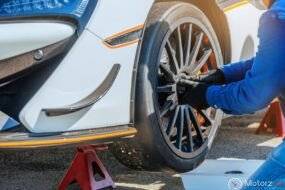The Sound of Speed Evolution of Car Audio Systems has witnessed a remarkable transformation over the decades, from the earliest motor vehicles that offered no more than a rickety ride to the modern-day marvels of engineering that are equipped with cutting-edge technology. One aspect of this evolution that often goes unnoticed but has had a profound impact on the driving experience is the evolution of car audio systems.
The Birth of Car Audio
The first car radios, or car audio systems as we know them today, were introduced in the early 1930s. These early car radios were massive and bulky, requiring a significant amount of space within the vehicle. They were also quite expensive, making them a luxury feature for only the wealthiest of car owners. Despite their limitations, these early car radios marked the beginning of a revolution in automotive entertainment.
The Rise of Car Radios
The 1950s and 1960s witnessed a significant shift in the automotive industry, with car radios becoming more affordable and accessible to the general public. Manufacturers began to integrate radios directly into the dashboard, eliminating the need for external installations. The sound quality improved, and car radios became a staple feature in most vehicles.
The Era of Cassette Decks
The 1970s brought a new era of car audio with the introduction of cassette decks. This technology allowed drivers to not only listen to the radio but also play their favorite music tapes. This marked a major leap forward in personalization and convenience for car audio systems. People could now create their own playlists, and mixtapes, and enjoy their favorite songs while on the road.
The Rise of Car Audio Customization
The 1980s saw an explosion in car audio customization. Car enthusiasts began to install elaborate speaker systems, amplifiers, and subwoofers to enhance their audio experience. This era also gave rise to car audio competitions, where individuals would showcase their customized systems, pushing the boundaries of what was possible in a car audio setup.
The Digital Revolution
The 1990s brought a digital revolution to car audio systems. CD players replaced cassette decks, offering superior sound quality and the ability to skip tracks with ease. Furthermore, digital signal processing (DSP) technology allowed for the customization of audio settings, enabling drivers to fine-tune their listening experience to perfection.
Integration with Electronics
As the new millennium dawned, car audio systems began to integrate with other electronic features in vehicles. Touchscreen displays, GPS navigation, and even Bluetooth connectivity became standard offerings in many cars. Drivers could now control their music and make hands-free calls with ease.
The Era of Infotainment
The 2010s saw the rise of infotainment systems, which combined audio, navigation, and connectivity into a single interface. These systems allowed drivers not only to enjoy their favorite music but also to access apps, stream content, and control various vehicle functions from a single touchscreen.
High-End Audio and Connectivity
Today, car audio systems have reached new heights of sophistication. High-end audio brands collaborate with automakers to offer premium sound systems that rival those found in high-end home theaters. Advanced connectivity options, such as Apple Car Play and Android Auto, have become standard, allowing drivers to seamlessly integrate their smartphones with the car’s infotainment system.
Conclusion
The evolution of Car Audio Systems is a testament to the relentless innovation and commitment to enhancing the driving experience. From the humble beginnings of bulky radios to the cutting-edge infotainment systems of today, car audio has come a long way. As we look ahead to the future, it’s exciting to imagine what new technologies and features will be integrated into car audio systems, further enriching our journeys on the road. One thing is certain: the sound of speed will continue to evolve, making our drives not just a means of transportation but also a source of entertainment and pleasure.
car audio system
car audio system android
car audio system repair
car audio system setup
car sound systems
Speed Evolution of Car Audio Systems











